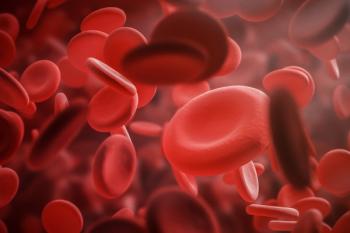
Aromatase inhibitors preferred for breast cancer
For many years, tamoxifen therapy has been considered the standard of care for postmen-opausal women with hormone receptor-positive breast cancer. While tamoxifen is effective and generally well-tolerated, cancer still recurs in women taking the drug, and serious adverse effects—including endometrial cancer and thromboembolic disorders—associated with tamoxifen are seen in a small proportion of patients.
For many years, tamoxifen therapy has been considered the standard of care for postmen-opausal women with hormone receptor-positive breast cancer. While tamoxifen is effective and generally well-tolerated, cancer still recurs in women taking the drug, and serious adverse effects-including endometrial cancer and thromboembolic disorders-associated with tamoxifen are seen in a small proportion of patients.
The American Society of Clinical Oncology (ASCO) recently updated its Technology Assessment on the use of aromatase inhibitors (AIs) in the adjuvant setting for postmenopausal women with hormone receptor-positive breast cancer. The panel concluded that optimal adjuvant hormonal treatment for these patients includes an AI as initial therapy or following treatment with tamoxifen. There are currently three third-generation AIs available-anastrozole (Arimidex, AstraZeneca) and letrozole (Femara, Novartis), which are nonsteroidal AIs, and exemestane (Aromasin, Pfizer), which is a steroidal AI.
ASCO's Technology Assessment on the Use of Aromatase Inhibitors as Adjuvant Therapy for Postmenopausal Women With Hormone Receptor-Positive Breast Cancer: Status Report 2004 is available on-line at
"The last time this assessment was updated, insufficient evidence existed to recommend AIs such as anastrozole as a first-line therapy," said Laura Michaud, Pharm.D., a clinical pharmacy specialist in breast oncology at the University of Texas M. D. Anderson Cancer Center in Houston. "Tamoxifen was considered the gold standard," she said. "This current update marks the first time that an AI has been designated as a 'reasonable alternative' to tamoxifen."
Michaud said that it is particularly important for pharmacists who influence treatment decisions on a daily basis to be aware of these changes to the recommendations. Pharmacists who are not involved in such decisions should also be aware of the updated recommendations so that they can appropriately counsel patients regarding the adverse effects of AIs, she noted.
Such adverse effects can include osteoporosis, so patients must be counseled about osteoporosis prevention and maintaining bone health, Michaud continued. She said that women can do a lot to maintain their bone health, such as taking calcium supplements and getting enough weight-bearing exercise.
"A lot of questions remain unanswered," said Michaud. Winer concurred. "At this point in time, it is not known whether patients are better off receiving an AI from the start, and skipping tamoxifen, or if they would benefit more from receiving a sequential regimen of tamoxifen followed by an AI," he said.
The ATAC Trialists' Group recently published its five-year Completed Treatment Analysis for the study in The Lancet (
"Breast cancer, even hormone receptor-positive breast cancer, is a very heterogeneous disease. The truth is, it may be that different treatment approaches are appropriate for different women with different types of tumors," Winer said. He went on to explain that evidence suggests some tumor subtypes may be more susceptible to one form of treatment, and other subtypes may be more vulnerable to a different therapeutic approach. "In terms of breast cancer treatment, we are really getting away from the idea that 'one size fits all,'" he concluded.
Newsletter
Pharmacy practice is always changing. Stay ahead of the curve with the Drug Topics newsletter and get the latest drug information, industry trends, and patient care tips.















































































































